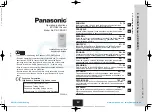
2 Installation
2.1 Sensor Orientation
Optimize detection reliability and minimum object separation performance with correct sensor-to-target orientation. To
ensure reliable detection, orient the sensor as shown in relation to the target to be detected.
Figure 3. Optimal Orientation of Target to Sensor
See the following figures for examples of correct and incorrect sensor-to-target orientation as certain placements may pose
problems for sensing some targets. The Q5X can be used in the less preferred orientation and at steep angles of incidence
and still provide reliable detection performance due to its high excess gain. For the minimum object separation distance
required for each case, refer to
Performance Curves
on page 33.
Incorrect
Correct
CC
Figure 4. Orientation by a wall
CC
Incorrect
Correct
Figure 5. Orientation for a moving object
CC
Incorrect
Correct
Figure 6. Orientation for a height difference
Horizontal
Orientation
Vertical
Orientation
(Optimal)
CC
Figure 7. Orientation for a color or luster
difference
Reflective
Surface
(optional)
Figure 8. Orientation for highly reflective target
1
2.2 Mount the Device
1. If a bracket is needed, mount the device onto the bracket.
2. Mount the device (or the device and the bracket) to the machine or equipment at the desired location. Do not tighten
the mounting screws at this time.
3. Check the device alignment.
4. Tighten the mounting screws to secure the device (or the device and the bracket) in the aligned position.
1 Applying tilt to sensor may improve performance on reflective targets. The direction and magnitude of the tilt depends on the application, but a 15° tilt is often sufficient.
Q5X Laser Triangulation Sensor with Background Suppression
6
www.bannerengineering.com - Tel: +1.763.544.3164







































